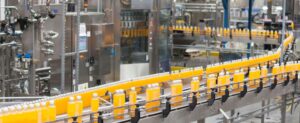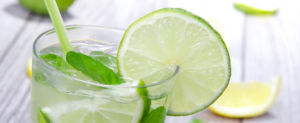With so many benefits, it’s easy to see why hemp-derived ingredients like CBD are finding their way into so many beverages.
The Farm Bill’s recent passing gives a green light for products to include hemp extracts. The legalization of hemp couldn’t come at a better time, as functional beverages—especially those deriving their benefits from plant sources—are rising in popularity.
Hemp’s “halo” has positioned the plant as a health and wellness powerhouse—an ingredient that shows promise for helping with inflammation, relaxation and better focus. With so many benefits, it’s easy to see why this newest superfood has found its way into so many beverage categories.
But as beverage developers looking at new and novel ingredients, there are a few key questions we have to ask ourselves first.
Raw Material Questions
To date, many products and trends referencing cannabis are emphasizing cannabidiol (CBD) content. However, the actual raw material is often some form of broad-spectrum hemp extract, or some form of the hemp seed.
Diligent developers should thoroughly investigate raw materials and select the right material to provide the desired consumer benefits while working well in the beverage. In general, hemp extracts are created using an extraction process. A few different methods of extraction and isolation exist. The most popular involves CO2 extraction followed by chromatography methods for isolation of specific compounds.
The extraction process filters out waxes and some of the unwanted parts of the extract and oil (for example, phytochemicals and chlorophyll). Additional isolation may remove some of the terpenes or other cannabinoids, depending on whether the end raw material is a broad-spectrum extract or an isolate form of CBD, tetrahydrocannabinol (THC) or another cannabinoid.
Today’s market shows the variety of ways that hemp and hemp-derived ingredients are being used in beverages. There are two energy drinks—Canna Energy and Rocky Mountain High—that label their hemp as “hemp seed oil extract” and “hemp seed extract,” respectively, with no reference to any CBD content. Another company, Elev8 Brands, sells a coffee infused with hemp protein, as well as tea that contains hemp seed oil. Soda makers such as Sprig and Cannabidiol Creations use CBD isolates.
CBD Naturals says its Hemp Rain flavored sparkling waters use phytonutrients and terpenes derived from hemp. Its nutrition label simply lists water and “natural flavors.” The company describes its N2O offering as a “Lemon Ice Neuroactive Cannabinoid Beverage.” This infused water features the company’s proprietary EndoActives blend of a “Cannabaceae cannabinoid colloidal complex” per the ingredient statement (Cannabaceae is the family of plants that includes cannabis, but also hops and other plants).
New to the market are Lumen Hemp Elixirs. These are 2-fluid-ounce shots in two functional benefit varieties, called Immune and Restore. Lumen Hemp Elixirs feature cold-pressed “hemp juice,” as noted in the ingredient statement. The flowers and leaves are juiced. No extraction method is used, and the seeds are excluded from the juicing process.
This beverage category also is likely to see pairings with other active ingredients, such as B vitamins, guarana extract, caffeine, L-theanine and many others. While providing additional nutritional benefits, the addition of other active ingredients can be an advantage for developers—particularly for beverages where consumers aren’t expecting a clear product.
Solubility Solutions
Solubility of raw materials will determine the functional properties of the raw material in a beverage format.
Many of today’s trending functional ingredients aren’t soluble. These include fat-soluble vitamins, insoluble fiber, oils and some plant proteins. Hemp extracts, including many CBD and THC ingredients, also fall into this category. This creates issues for beverage developers charged with creating an infused product that is uniform, clear and free of off-flavors.
Oil will not ready disperse in the water. If left alone, the oil droplets will flocculate together, followed by coalescence and eventual creaming.
To avoid this, developers must create an oil-in-water emulsion. There are a couple of mechanisms to create the emulsion, which may be used separately or together. The first is the use of a chemical emulsifier. Lecithin—derived from various oils—often is used for this purpose. However, other ingredients, such as protein, also can make great emulsifiers.
Although the emulsifier will create interaction between the hydrophobic oil and the hydrophilic water, this sometimes isn’t enough to create a stable emulsion. Large droplet sizes will contribute to destabilization.
Droplets of smaller size will slow the destabilization process. This is achieved using high-pressure homogenization—using pressure to push product through a very small orifice and create very small particle sizes. The result is a very small oil droplet that has both more surface area to engage an emulsifier, as well as more space between droplets. Traditional dairy processing homogenization achieves a particle size less than 1 µm. This results in a stable emulsion—with protein serving as the emulsifier—and improved mouthfeel.
While this is a longstanding method in the industry, the evolution of nanotechnology now provides other opportunities and ingredient solutions. The cannabis beverage industry has taken advantage of this technology, and we are now seeing commercialized examples. The advantage to creating nano-sized particles is two-fold in cannabis beverages. First, processors are able to achieve a completely clear beverage while incorporating oil-soluble components. Secondly, the very small particle size has been shown to absorb faster into the cells during digestion—and this leads to faster effects of the active cannabis ingredients.
Traditional high-pressure homogenization and use of an emulsifier works well for fortified beverages containing other solid materials where clarity is not an issue. However, it is difficult at neutral pH to achieve a clear beverage with insoluble ingredients. That’s because emulsifier use will create a cloudy beverage.
The bottled water industry is the best illustration of this, with several hemp and/or hemp-derived CBD infused brands on the market. These products have achieved a completely clear appearance. Many companies are touting proprietary processes and/or ingredients achieved via nanotechnology. Products such as Quantum PCR H20, from Quantum Dynamics LLC, specifically call out the use of nanotechnology in marketing materials.
Accurate Delivery
Finally, beverage product developers must ask themselves what they are trying to deliver. Products such as Hemp Hydrate deliver 3 mg of hemp extract per 16.9 fluid ounce bottle, while Endo Water delivers 10 mg of hemp oil in a similar 16.9 fluid ounce serving. Elsewhere, VYBES infused water has a claim of 15 mg of hemp CBD per 14 fluid ounce bottle.
Delivering broad-spectrum extracts is a matter of adding the right amount of the total extract. The actual chemical makeup of broad-spectrum extracts could differ based on the growing conditions of the plant, time of harvest, plant variety, method of extraction, etc. The raw material will have batch-to-batch variation. Although this may be acceptable for broad-spectrum extracts, those looking for pain relief will be looking for consistency in delivery of the active ingredient. Therefore, an isolate will need be used.
Developing products to deliver a certain amount of one active component—such as CBD or THC—will require additional research and knowledge of the raw material. If the active component is prone to degradation, developers will need to understand the rate of degradation and formulate accordingly to ensure delivery of the full amount of the active component at the end of shelf life. To ensure this happens, the end product would need to undergo testing for release and be subjected to shelf life testing to determine the target end of shelf life based on degradation of the active component. In addition, the method for testing will need to be readily available and somewhat cost-effective.
Delivery of an active ingredient for medical use in a beverage format is not something commonly seen in the market. One exception is Hop Chronic THC infused non-alcoholic IPA beer. It was developed by Green Leaf Medical and Flying Dog Brewery for patients located in Maryland. It is intended for medicinal use.
Although not marketed for medical use, Colorado’s Stillwater Brands sells Ripple dissolvable THC packets. They use a THC isolate that claims faster absorption, and it can be used in edibles and drinks alike. This method of delivery could be ideal for medical users, as they would be getting a known amount of the active component in a way that is convenient.
Lindsay Wisener is the founder and principal consultant at WiseBev, LLC, a beverage consulting and development company. She obtained her B.S. and M.S. degrees in food science from Purdue University. Lindsay has 10 years of experience developing functional and nutritional beverages. She can be reached at lindsay@wisebev.com or via phone at 765-729-9843.
This post was published by PreparedFoods and may be found on their website here:
https://www.preparedfoods.com/articles/122116-best-practices-for-developing-legal-cannabis-beverages







